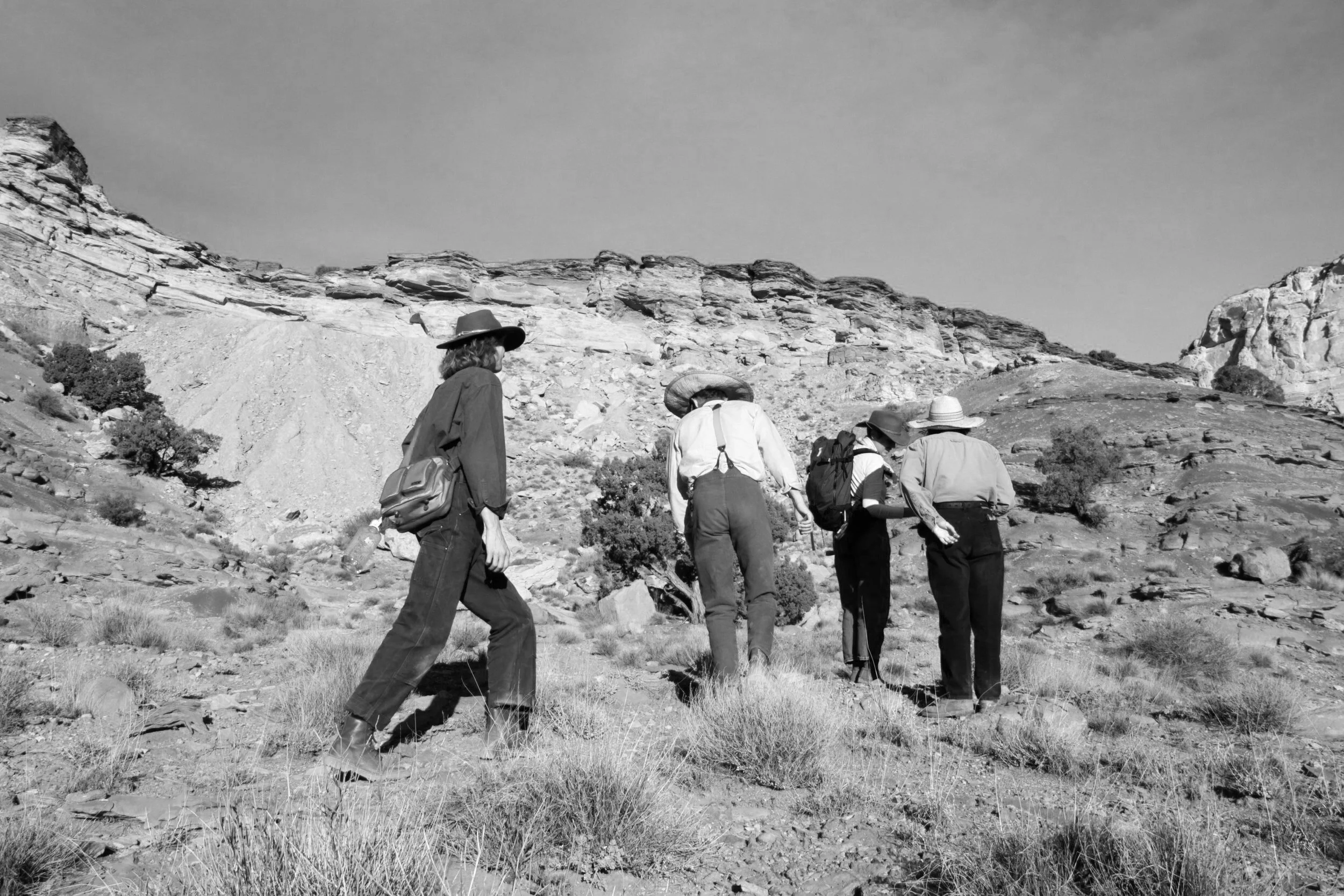FIELD STUDIO GEONTOLOGICAL SURVEY
Kevin Howard, Will Kershner, Elpitha Tsoutsounakis, and Summer Orr at the Temple Mountain Survey. Photo by Emily Arnsten. 2022
@geontologicalsurvey
Ochre is always in a state of becoming—becoming color, becoming blood. Ancient, stellar death becoming current, terrestrial life; geological memory becoming future technology. Humans have evolved with Ochre: a polyphonic being threading iron though our bodies, our lands, our cultures, and our knowledge. Ochre is Iron Oxide: a multivalent material combining iron with oxygen in an endless number of geological and biological forms. I relate to Ochre through design research and critical making. Design becomes epistemic tool beyond aesthetic representation. My initial efforts in surveying Ochre have emerged as the Field Studio Geontological Survey (FSGS): a design research collective assembling and extending Ochre dimensions to expand Human/Nonhuman inter-subjectivity and an ontological reconciliation between Life and Nonlife.
I join a community of academic and community scholars around the globe who think with Ochre from a variety of disciplines. How have we evolved through our use of Ochre? What future does Ochre bring as art or technology? How can Ochre remediate legacies of extraction? I am in interested in how Ochre can dismantle human/nonhuman and life/nonlife dualisms. (Plumwood) How can we return to the material from our current abstraction and commodification of color? How can we relate to terrestrial beings beyond anonymous resource? How can Ochre reveal plural realities of time and place through erased or forgotten narratives?
The FSGS is inspired by the United States Geological Survey (USGS). Initially, USGS was a primary source informing critical making in practice, but eventually it became a precedent for methods of critical making. USGS has mediated our human relationship to the more than human. Terrestrial beings—biological and geological—surveyed and cataloged by the USGS are translated into abstract value. Value that can be extracted from—at the expense of—some beings/places to serve other beings/places. (Povinelli) FSGS resists the colonial, capitalist influence of USGS in three modes: Field, Studio, and Community Operations. These operations are communal and engage the public through participation and workshops, exhibitions, and publications. FSGS products include pigments and swatches as expressions of Ochre bodies, as well as maps, atlases, and tools that communicate stories of their entanglements in ecologies, in politics, and in movements towards social justice.
FSGS research is catalogued in a digital archive named Unknown Prospect using OmekaS and a combination of metadata vocabularies. Ochre bodies, pigments, and swatches are extended into the virtual with the added materiality of metadata identities that become dream/soul scripts multiplying their dimensions. At the risk of further entrenching FSGS in dichotomy with USGS, I imagine Unknown Prospect as antidote to the USGS Mineral Data Resource System, a dystopian archive of global mineral beings as “economic resource”. Instead of products that orient humans to nonhumans through matters of fact, FSGS generates products based on a relational ontology through matters of care. (Haraway, Puig de la Bellacasa) FSGS connects ancient iron sea-bed to modern steel press-bed, increasing our capacity for Ochre relations and amplifying entanglements and narratives of the anthropos-not-seen. (de la Cadena)
FSGS INTERLOCUTORS:
Emily Arntsen
Nikki Bennett
Levi Crowley
Lauren Geisler
Kiernan Grissom
Kevin Howard
Emma Ireton
Will Kershner
Summer Orr
Megan Petitt
Angela Rauf
Sam Van Wetter
